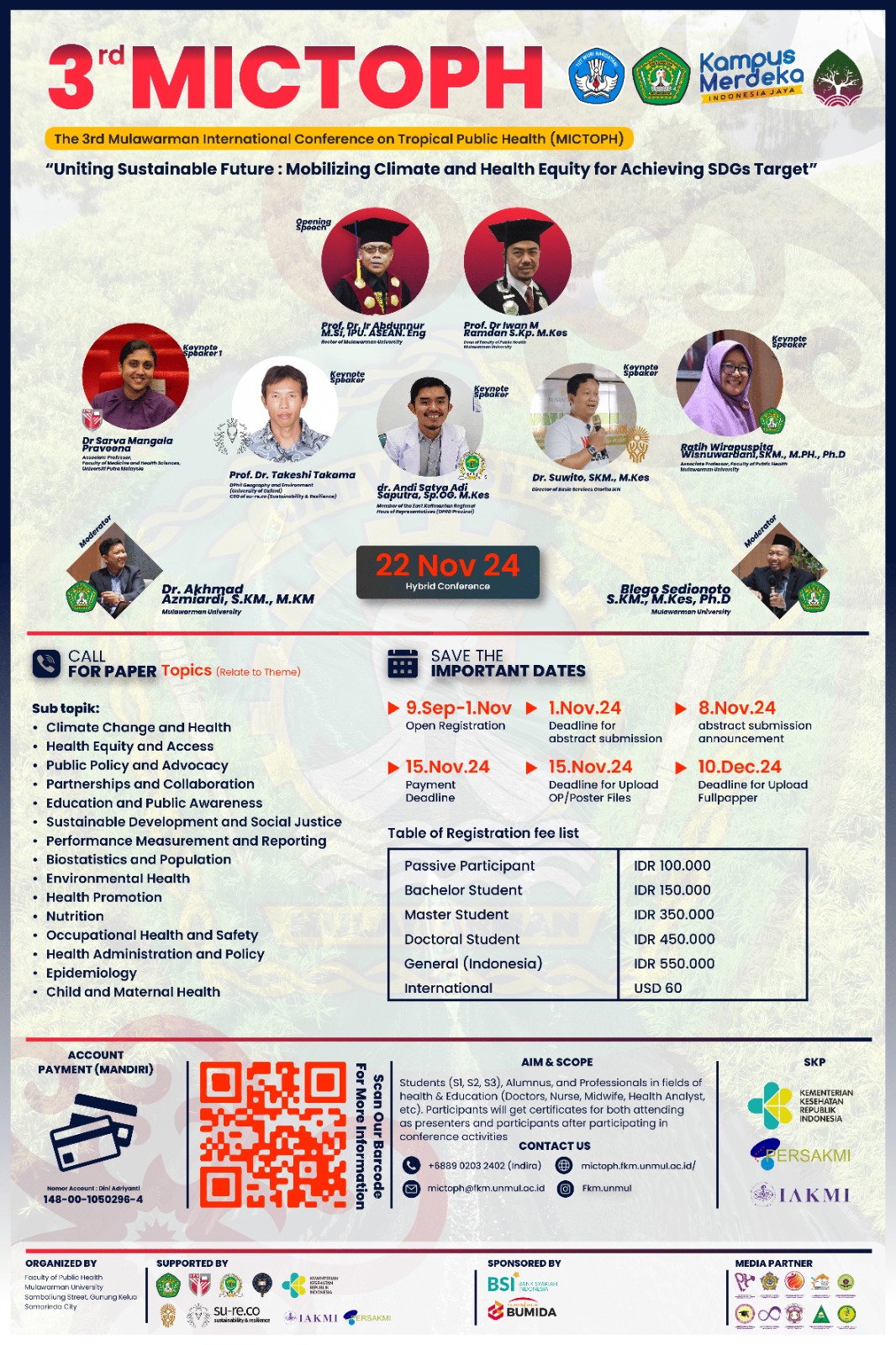FACTORS AFFECTING IMPLEMENTATION CONGENITAL HYPOTHYROID (SHK) SCREENING AT BERIMAN BALIKPAPAN HOSPITAL
Keywords:
Health workers’ knowledge, staff training, ICU/PICU/NICU Units, Periodic SocializationAbstract
Background : Early detection of congenital abnormalities through newborn screening (SBBL) is crucial to identify conditions like congenital hypothyroidism (SHK) and enable timely interventions to prevent stunting and intellectual disability. This study aims to examine the relationship between the knowledge of health workers in obstetrics, perinatology, and ICU/PICU/NICU rooms and the implementation of SHK at Beriman Balikpapan Regional Hospital. Objective : to examine whether the knowledge factor of health workers in the obstetrics, perinatology, ICU/PICU/NICU rooms is related to the implementation of SHK at the Beriman Balikpapan Regional Hospital. Research Methods/ Implementation Methods : This research method is descriptive analytical research with a cross sectional approach with a total of 39 respondents, a questionnaire in the form of a Google form which was sent on November 19 2023 via WA to health workers in the obstetrics, perinatalology, ICU/PICU/NICU of Beriman Balikpapan Hospital. Results : The univariate analysis showed that 92.3% of respondents knew the definition of Congenital Hypothyroid Screening, but 69.2% were unaware of the tools used to analyze blood samples. The Shapiro-Wilk normality test was used to assess the distribution of knowledge scores, revealing that health workers' knowledge about Congenital Hypothyroidism Screening was generally low, with only 53.8% scoring adequately Conclusion/Lesson Learned : The successful implementation of SHK activities at Beriman Hospital depends on having health workers with high knowledge of the SHK program to achieve targets effectively. It is recommended that periodic socialization sessions on SHK knowledge be proposed to management to enhance the knowledge of staff in obstetrics, perinatology, and ICU/PICU/NICU units.





